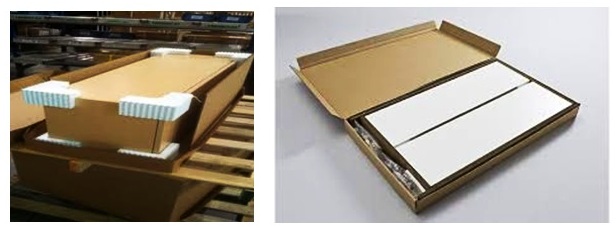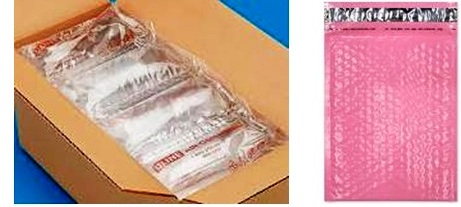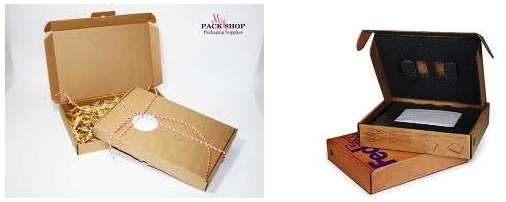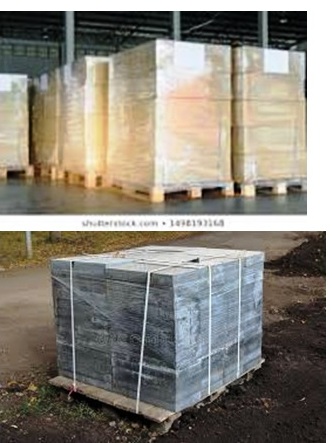
There are two major ways to keep a package safe throughout its transport; the categories of restraint and cushion. The other factor that goes into it, is whether it is inside or outside of the package that will accommodate these factors. What keeps packages safe is the item not being able to move enough that it could break itself or the package during potentially destructive transportation impact. Simply, restraint and cushion save it all. Now for those that cannot imagine from the box, we can think of it as something else. When a car crashes, there are two major things that mostly stop people from getting hurt. These important parts of any car are the seat belts and the air bags. The seat belt will restraint all movement of the body and the air bag will pop out and stop the head which cannot be stopped by the seat belt. As the head hits the air bag, it allows some movement to slow down the impact and cushion the head.
When thinking of how to protect the package, the first thing to do is determine the size of the product and how big the box is going to be. Of course, as shown in the last few pictures you must have room in between the box and the product to put in packaging safety material. We will get into more packaging safety material later but for now let’s focus on one of the most known, styrofoam.

Styrofoam can come in many shapes, sizes, and detail. Back to the point at hand though, one must consider not only the size of the product, but how much room will go between the product and the box. By doing so, it is possible to limit the movement of the product itself while also being a valuable cushion. The corners of a package must be looked at carefully in cases with heavier products, because without a barrier or cushion it is actually quite easy for the box to become broken in the process. With a broken box comes a damaged product, which will not only likely be sent back but also make a customer worry about the overall ability of the manufacturer. This will end up leading us to the question of how much room is needed and how much packaging safety material will be needed to make sure that the product and the box are safe. Now while this is typically used with moderately heavy objects, it can also be used with smaller ones. In any case, as shown above there can be extra protective material to be placed on the corner of the products, or if flat a longer flat piece can be used. Then a flat rectangle can be placed on top and bottom that match the size of the box. Make sure to leave just enough room for the Styrofoam and the product, and by doing so it will restrain all sides of the product due to its lack of room. As for the need of cushion, styrofoam is naturally a bit squeezable and can be shifted a bit.
Lighter objects on the other hand can have other materials such as “bubble wrap” or just a form fitting inner box to hold it. In general, there are many ways that a product can be restrained and cushioned. To make a simple system of what kind of protection is needed for which instance there will be two categories. With light items, a more flexible and thick type of padding is what would be desired, but for heavy items a much denser padding would be optimal.


Now that we have the inside covered quite a bit, let us take a better look on the outside of the package starting with the box itself. The box used needs to depend on several factors such as weight, size, and durability.
Weight is not so much the box itself but what is wished to be placed in the box, Upela suggests that boxes that weigh more than 20 kilos (44 lbs.) should use a double or even triple corrugated box in order to be stored. Until it gets up into the 50-kilo range (110 lbs.) to which it is suggested that the box be made of wood, metal, or solid plastic. Leaving boxes under 20 kilos (44 lbs.), which can be put into boxes with double or single corrugated cardboard. Similar shipping boxes could also be used.

While to many this would seem like an open and shut case at this point, there are still a few more factors to go over. For instance, how does this package get from point A to point B? Typically, products are brought on a truck in mass. In order to follow along with how to keep these packages safe, often many of these packages will be placed on a pallet for easy transport and then will be wrapped with cellophane in order to keep them restrained. This is not the only measure in many cases though, after the cellophane is wrapped depending on the weight and likelihood to fall the packages will also be strapped to each other. By being strapped to each other, it is the final form of restraint as to try one final time so that the package cannot fall over during transportation.

Finally, it is important to question one last thing before a package is shipped. What kind of weather will it encounter and will the boxes be able to withstand it? Now while the main thought is rain, there is more to it than that. Even plain moisture in the air can change the whole ability of the package to survive. In more humid weather, boxes will become weaker causing them to possibly fall in on themselves or get crushed if they are in a stack. So, try to remember that the materials to be used cannot just be strong, but must also be useful in the climate that they will be shipped to.

References
https://www.upela.com/en/consignments-upela-package-protect-parcel-32.html
https://www.floship.com/can-protect-goods-damage-shipping/
https://www.larsonpkg.com/blog/protective-packaging-for-different-modes-of-transport


































